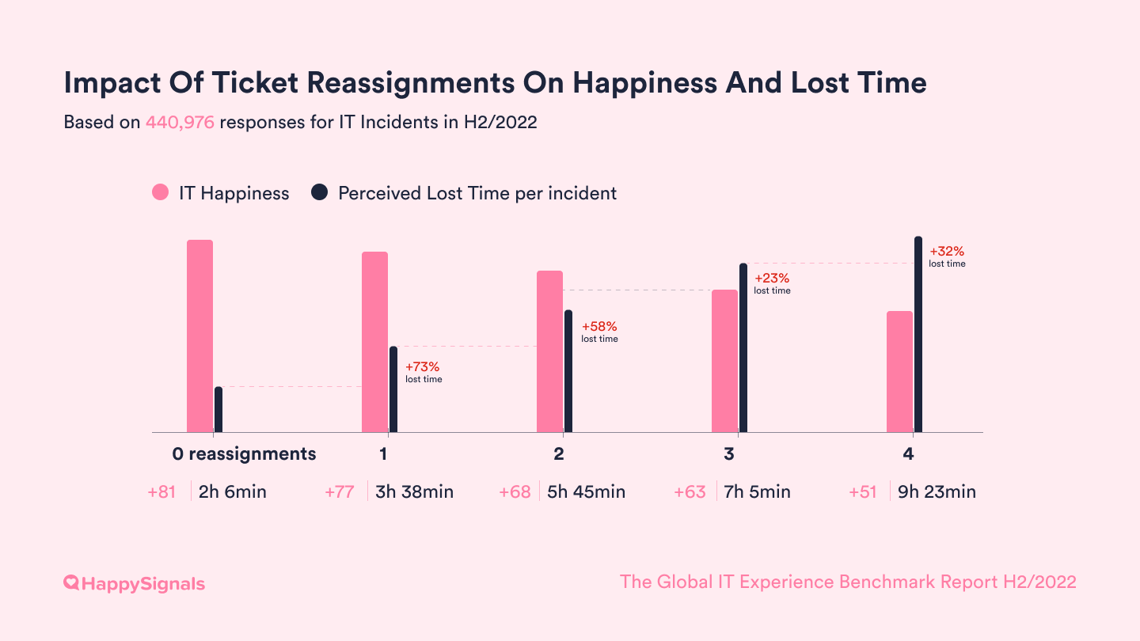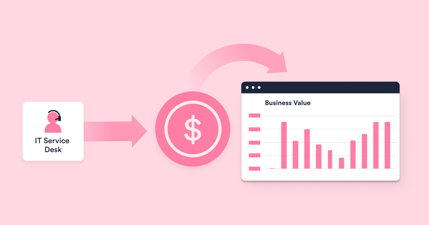The IT service management (ITSM) and IT support communities are quite rightly increasingly focused on employee or customer experience. More and more companies are focused on IT strategies and targeted improvements that enhance the IT support experience.
A key element of this is speed – linking the end-users quickly to the right people and/or the right information so that their immediate need for assistance can be met, whether related to an issue or a request, including requests for information.
IT-support “ping-pong”
Scenarios where employees are passed from service desk agent to service desk agent – as they patiently, or not so patiently, wait – are increasingly viewed as constituting a poor employee experience. Too many of us know the situation well, “Please hold while I transfer you to a colleague who can help…” It can often be a time-consuming and frustrating journey for the end-user.
After all, no one likes to “ping-pong” between different people, having to wait on hold, perhaps having to re-explain the issue again and again, and maybe even having multiple people trying to apply the same unsuccessful solution.
It’s not great for the employee, and often it’s just as dispiriting for the IT support personnel involved. But the really important impact, and cost, of this ping-ponging is at a business level. Because the passing of tickets, and employees, between people, groups, and even companies can also be costly, not just in terms of time, but also money.
But let’s start by highlighting the true impact of ticket reassignment on the employee experience.
Understanding the employee “happiness” impact of bounced tickets
The data in the graphic below shows the levels of employee happiness, relative to ticket reassignment, based on 440,976 end-user feedback responses from multiple customers.
Previously, people have simply assumed that the “bouncing” of tickets, and people, adversely affected the employee experience (and employee happiness); now this data demonstrates that it does and, importantly, it shows the magnitude of the drop-off in happiness with each bounce.
The data is taken from our “The Global IT Experience Benchmark Report”.

The first column shows tickets that aren’t reassigned to another team member. The end-users happiness (on average) is 81 points, with an average of 2h 06m perceived lost time.
However, if a ticket is reassigned, the happiness level will reduce by an average of seven points with each reassignment. Not only this, but the lost time on average increases by one hour and 49 minutes with each reassignment.
If you now look at this from a business impact perspective, employees are losing 109 minutes of productivity per reassigned ticket. This is where the alarm bells should really start ringing.
The graphic shows more and more productive time wasted as the number of reassignments increases.
More information can be found on the Impact of Reassignment Counts on Employees Productivity here.
Quantifying the business cost of bounced tickets
In an ideal world, there will be a minimum of ticket bounces, with the first service desk agent “on deck” able to handle the ticket. However, it’s not always going to be possible, and an over-zealous agent keeping an end-user on the phone, probably on hold, while they try to hit a first-contact resolution (FCR) target probably isn’t doing the end-user any favors in terms of their productivity (or, in fact, their own productivity for that matter).
But what if your service desk tried to significantly reduce the number of ticket bounces? For example, through better initial ticket distribution, recruitment practices (and the staff recruited), knowledge management, and second-touch resolution practices. This approach would potentially save the business money (as well as provide a better employee experience).
Think about it! It would save time and money on at least three levels:
- Service desk personnel time and, potentially, opportunity cost
- Employee perceived lost productivity and the frustration caused by the situation
- The potential business impact of employee lost productivity, for instance lost sales and the associated revenue (i.e. the employee opportunity cost).
It can get very “fuzzy” when one tries to calculate what an individual incident costs the business, so let’s keep it simple.
If an employee has an all-in cost to the business (i.e. not simply their pay) of GBP 50 or USD 60 per hour, then each ticket costs GBP 100 or USD 130 or more, perhaps notionally, if it needs to be reassigned twice (due to the lost employee productivity).
Why “perhaps notionally”? It’s because the employee could work an additional two hours of “unpaid overtime” to overcome the effect of the lost productivity. Then rather than it being a true business cost there’s a goodwill cost. Alternatively, the true cost of those two lost hours might be even more than the all-in employee cost in terms of the adverse effect on the business. As I said, the math can be fuzzy.
The cost of lost employee productivity might be very clear-cut for your company, or it might be somewhat fuzzy. You need to start to add up how much bounced tickets are costing your business. It’s the first step in reducing ticket reassignment’s drain on your organization.





